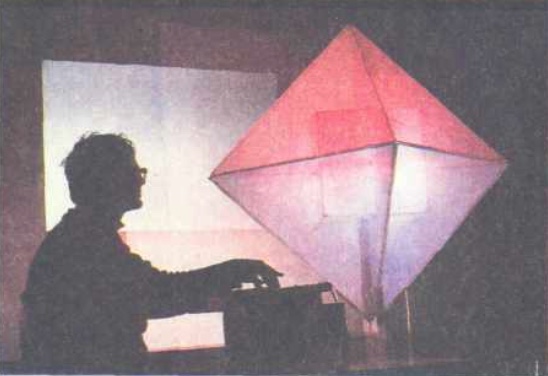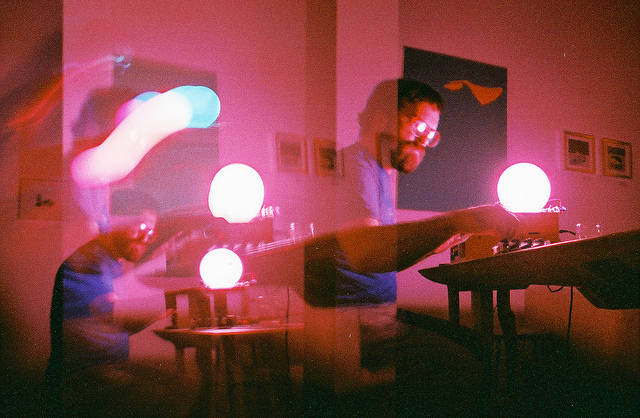::vtol:: “luminescence” workshop from ::vtol:: on Vimeo.
Artists are, in endless cycles, rediscovering techniques that might otherwise have been discarded. And that includes performance concepts in the audiovisual realm.
I’m this week in Moscow as a guest of the Polytechnic Museum (specifically their Polytech.Science.Art program. There is, I think, no more historically apt place on Earth to explore the connection between sound and image than the land of Scriabin, Kandinsky, Ballets Russes, and constructivist art, this epicenter of the audiovisual revolution.
What you probably don’t know so well is audiovisual experimentation from the later Soviet period, and that was partly impetus for our event – the work in particular of the Prometheus project, named for the Scriabin piece. We were inspired in particular by the “Crystal” machine, an octahedron mounted inside another octahedron made of frosted plexiglass, played by keyboard to change colors – with a whopping 600 watts of power on each color channel. You could guide futuristic airships into dock with this thing, it’s so bright, but it was made from scrounged parts. Preserving the remnants of that unit and recreating it/reinterpreting it are a longer-term project. It’s just one of a long line of such ingenious creations leading through the 80s, largely unknown even in Russia and certainly deserving of expanded awareness internationally. (And speaking of history, you can even go back to Russian Futurist 1916 Vladimir Baranoff Rossiné’s Optophonic Piano for yet more resonance in Russian history.)
I’m joined by Moscow-based media artist vtol, aka Dmitry Morozov in a workshop for creative participants at the museum this week. We liberally borrowed from Dmitry’s previous experimental workshop, based on Arduino, producing interactions with lightbulbs. Check out the video at top. But we’re going a bit further this time, with an expanded look at the history of audiovisual performance and how synchronicity and trans-media mappings work, as well as an extended laboratory in producing light machines for musical performance.
Documentation of the 1-day workshop in October (I wasn’t lucky enough to attend):
http://vtol.cc/filter/ws/luminescence
I raise this now partly to see if it triggers some more discussion while I’m in the Russian capital – to stimulate this Russian-international artistic dialog.
And in the meantime, I’m reminded of some other projects – including Pete Edwards, who once performed on our MusicMakers/Handmade Music series (back when it was based in New York, image below).
Benjolin Light Synth [Casper Electronics]
There are many, many other relevant examples, but I particularly like Michael Vorfeld’s Lightbulb Music, performed at Dark Circuits Festival 2014 in New York (and filmed here by the incomparable electronic musician and curator Hans Tammen):
To me, this is all valuable not out of some particular novelty of the hardware, but because it forces us to develop a real language of color and visual rhythm that matches the musical performance. It’s a window to greater discipline in the work we do.
More on that soon, but I’d love to hear your thoughts and links.

